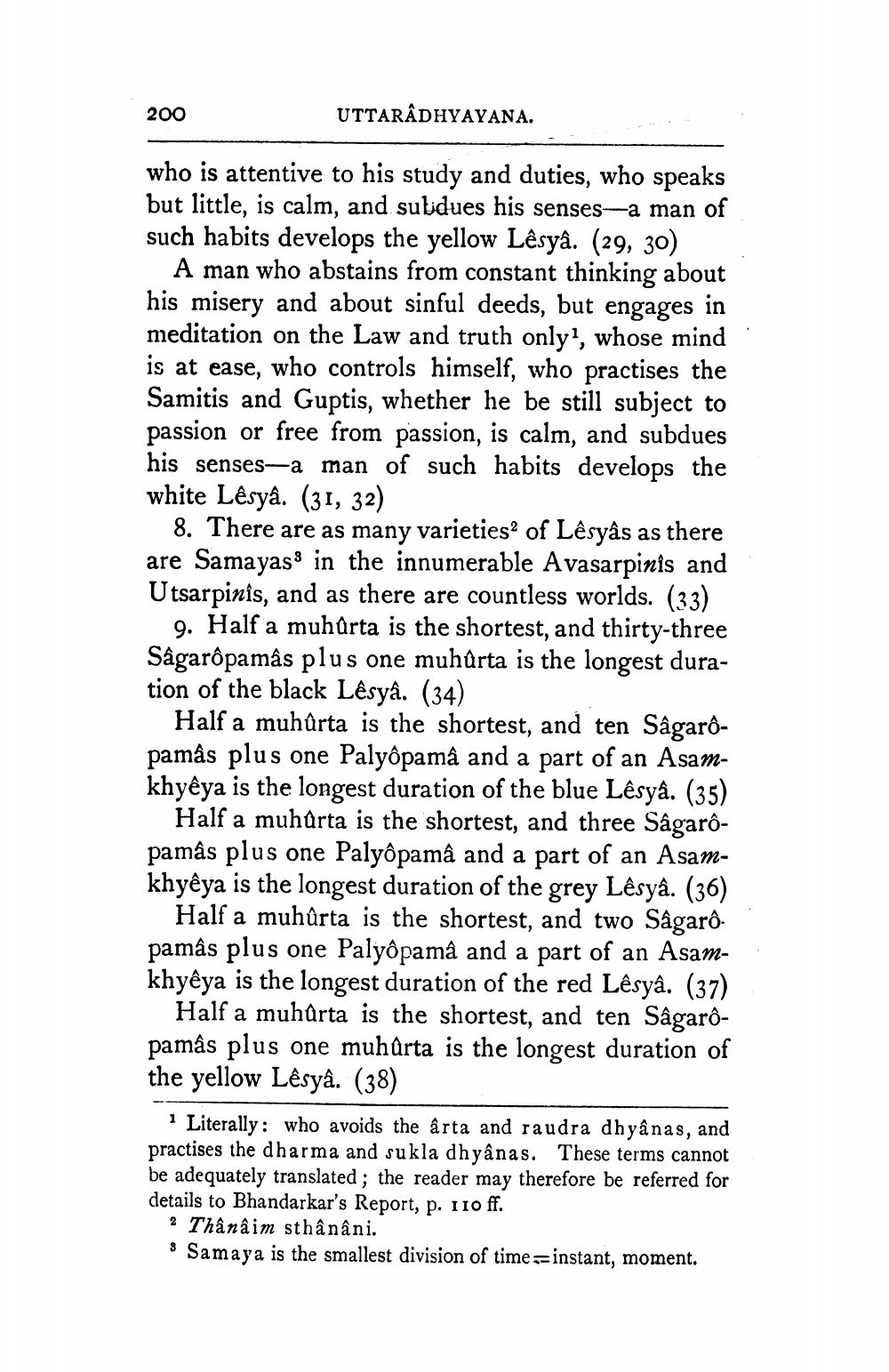________________
200
UTTARADHYAYANA.
who is attentive to his study and duties, who speaks but little, is calm, and sulidues his senses-a man of such habits develops the yellow Lêsyâ. (29, 30)
A man who abstains from constant thinking about his misery and about sinful deeds, but engages in meditation on the Law and truth only?, whose mind is at ease, who controls himself, who practises the Samitis and Guptis, whether he be still subject to passion or free from passion, is calm, and subdues his senses--a man of such habits develops the white Lèsyâ. (31, 32)
8. There are as many varieties of Lêsyâs as there are Samayass in the innumerable Avasarpinis and Utsarpinis, and as there are countless worlds. (33)
9. Half a muhůrta is the shortest, and thirty-three Sagarôpamâs plus one muhûrta is the longest duration of the black Lesya. (34)
Half a muhûrta is the shortest, and ten Sagarôpamâs plus one Palyộpamâ and a part of an Asamkhyêya is the longest duration of the blue Lêsya. (35)
Half a muhurta is the shortest, and three Sâgarôpamâs plus one Palyôpamâ and a part of an Asamkhyêya is the longest duration of the grey Lêsyâ. (36)
Half a muhûrta is the shortest, and two Sâgarô. pamâs plus one Palyộpamâ and a part of an Asamkhyêya is the longest duration of the red Lesyâ. (37)
Half a muhůrta is the shortest, and ten Sâgarópamâs plus one muhûrta is the longest duration of the yellow Lêsyâ. (38)
1 Literally: who avoids the arta and raudra dhyanas, and practises the dharma and sukla dhyânas. These terms cannot be adequately translated; the reader may therefore be referred for details to Bhandarkar's Report, p. 110 ff.
* Thânâim sthânâni. s Samaya is the smallest division of time=instant, moment.




